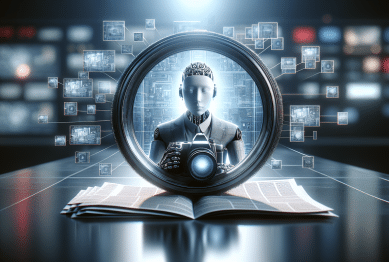Explore how social media platforms shape the news you see every day. This article uncovers the algorithms, filter bubbles, misinformation trends, and real-world impacts of news shared through popular digital networks.
How Social Media Changed the News Landscape
In recent years, social media has reshaped the way people interact with news. Major platforms such as Facebook, X (formerly Twitter), and Instagram have become essential sources of current events. Unlike traditional print newspapers or TV broadcasts, these networks allow stories to circulate instantly, reaching millions in a matter of minutes. Convenience and accessibility are central drivers for users turning to these channels for breaking updates, in-depth features, and community conversations. Social media’s influence on news is profound, and it’s changing how information is consumed — as well as who gets to be heard in public dialogues.
The trend has led to a shift in power. Instead of trained journalists or editors deciding what makes headlines, now anyone with a smartphone can share newsworthy events or opinions. This decentralization comes with both benefits and challenges. Audiences can see real-time reactions from eyewitnesses or discover trending topics as they unfold. The rise of mobile phones and on-the-go connectivity means news now follows users throughout the day, rather than being limited to designated times or places.
While this shift allows for greater diversity of voices, it also introduces concerns around credibility and noise. Not all shared stories are verified. Sometimes misinformation travels just as quickly as factual reporting. Social media platforms have responded with tools to flag suspicious content, yet the responsibility for vetting facts often falls to individual users. Navigating today’s fast-changing media environment calls for a mix of digital savvy and critical thinking. The social media news revolution is here — and it continues to evolve.
The Role of Algorithms in Shaping What You Read
Most users aren’t fully aware of the algorithms that curate their news feeds. Every major social media site utilizes proprietary algorithms to decide which stories appear more prominently. These systems analyze personal interests, previous engagement, and trending discussions to determine what gets shown. For example, Facebook’s News Feed ranks posts based on how likely they are to generate interaction, while X emphasizes recency and viral moments. Understanding algorithm influence is key to grasping why certain headlines grab attention over others.
Algorithms are designed to optimize user experience by making feeds more relevant, but they also create a unique version of reality for every user. Two people following identical outlets may see completely different content depending on their interaction history. The personalization intends to keep you scrolling, but it can sometimes reinforce existing beliefs or preferences. The echo chamber effect, where users encounter similar viewpoints repeatedly, isn’t an accident — it’s an algorithmic outcome. The aim is to heighten engagement, though it affects the diversity of news exposure.
Because these systems are largely invisible, their prioritization can be hard to scrutinize. Platforms periodically adjust their algorithms in attempts to combat the spread of unreliable content. However, small changes can greatly affect what millions see first, shaping public discourse. Some researchers recommend more transparency so users understand why they’re seeing certain posts (Source: https://knightfoundation.org/reports/algorithms-and-news/). Algorithmic curation will likely remain a core driver in how digital news is distributed and discovered.
Filter Bubbles and Echo Chambers: What Do They Mean for You?
As social media news consumption rises, the terms “filter bubble” and “echo chamber” gain prominence. A filter bubble forms when algorithms show primarily content that matches your preferences, cutting you off from opposing ideas. Similarly, echo chambers develop when users cluster in online groups that reinforce their perspectives. These feedback loops can narrow awareness and shape personal reality, especially during election cycles or public crises. Researchers suggest these effects are more pronounced on some platforms and among frequent users.
Filter bubbles are not inherently intentional. Algorithms are programmed to maximize engagement metrics, but not necessarily to broaden viewpoints. As a result, users may rarely see news outside their ideological or social circles. Studies from leading communications departments indicate that echo chambers are common among online communities, especially in political discussions (Source: https://www.pewresearch.org/journalism/2017/12/20/how-americans-encounter-different-views-on-social-media/). This can have implications for public discourse and critical thinking.
Breaking out of a filter bubble often requires conscious effort. Seeking diverse sources or following voices with varied backgrounds can introduce new ideas into the feed. Social media companies sometimes prompt users with content labeled as “suggested” or “explore,” aiming to surface less familiar topics. However, real change may depend on user intention. As digital citizens, understanding how bubbles form is essential for broadening perspective and responsibly engaging with news.
Misinformation and the Challenge of Verification Online
Misinformation presents one of the biggest concerns for social media news. False or misleading stories can spread widely due to the speed and viral nature of these platforms. With minimal barriers to publishing, anyone can circulate a rumor or opinion disguised as fact. High-profile global events, health scares, or natural disasters often spark waves of hoaxes, conspiracy theories, and manipulated images. Verifying sources becomes a vital digital skill in this environment.
Some social media companies have introduced systems to curb misinformation: warning labels, independent fact-checking, and reducing visibility for flagged posts. The effectiveness of these solutions varies. Not all misinformation is caught promptly, and some users continue sharing disputed stories. Public education on digital literacy plays a critical role in strengthening collective resistance to false information (Source: https://www.unesco.org/en/articles/tackling-misinformation-media-digital-literacy). Fact-checking outlets, both nonprofit and news-based, actively work to debunk viral myths, but the challenge is ongoing and evolving.
The rapid pace of digital news makes instant verification demanding. Users are encouraged to cross-reference stories, check the credibility of the sources, and remain cautious before forwarding posts. Institutions such as universities and journalism organizations regularly publish guides to help readers discern reliable material from misleading content. As technology advances, staying informed about verification practices is more important than ever.
The Rise of Citizen Journalism and Real-Time Updates
Social media empowers everyday people to become reporters — capturing events as they happen, even before traditional outlets arrive. This trend is called citizen journalism. From videos of protests to eyewitness tweets during disasters, digital networks now provide unique documentation and community-driven narratives. Sometimes, these firsthand posts become the primary records of unfolding situations, later referenced by mainstream news organizations.
Citizen journalism provides diverse perspectives, often highlighting stories left out of mainstream coverage. However, it comes with challenges surrounding context, accuracy, and safety. Not every post reflects the full scope of events, and some may unintentionally mislead. Responsible platforms encourage sharing only verified or factual information, reminding users to consider the impact of spreading unconfirmed details (Source: https://www.reporterslab.org/exploring-the-evolution-of-citizen-journalism/).
The immediacy of social updates makes them a vital part of today’s news ecosystem. Live videos, story highlights, and instant polling bring audiences directly into the action. Policymakers, emergency responders, and civil groups monitor these feeds for breaking updates. As citizen journalism evolves, it’s reshaping expectations for transparency, speed, and engagement from the broader media world.
Strategies for Navigating Social Media News Responsibly
With so much information circulating online, readers are encouraged to adopt strategies for consuming news responsibly. Digital media literacy has become an important life skill, helping users identify trustworthy sources and recognize bias. Consulting a mix of established news outlets, independent fact-checkers, and credible nonprofits builds a more balanced view.
Critical reading involves more than just skim-reading headlines. It’s useful to examine the date, context, and author’s credentials behind stories. Recognizing visual cues, such as “sponsored” tags or warning labels, can prevent sharing potentially misleading material. Engaging in constructive discussion and seeking clarification directly from content creators also supports healthy dialog. Some educational institutions now offer free resources to help strengthen digital literacy among users of all ages (Source: https://medialiteracyweek.us/).
Setting boundaries for news consumption — such as taking breaks from constant updates — is also linked to better mental wellbeing. Social media offers a powerful way to stay informed, but intentional engagement remains essential. By approaching digital news with curiosity and caution, users can navigate the modern landscape more confidently, protecting themselves against misinformation and echo chambers.
References
1. Knight Foundation. (2017). Algorithms and News. Retrieved from https://knightfoundation.org/reports/algorithms-and-news/
2. Pew Research Center. (2017). How Americans Encounter Different Views on Social Media. Retrieved from https://www.pewresearch.org/journalism/2017/12/20/how-americans-encounter-different-views-on-social-media/
3. UNESCO. (2022). Tackling Misinformation with Media and Digital Literacy. Retrieved from https://www.unesco.org/en/articles/tackling-misinformation-media-digital-literacy
4. Reporters’ Lab (Duke University). (2021). Exploring the Evolution of Citizen Journalism. Retrieved from https://www.reporterslab.org/exploring-the-evolution-of-citizen-journalism/
5. Media Literacy Week. (2023). Resources for Digital Literacy. Retrieved from https://medialiteracyweek.us/
6. Harvard Kennedy School Misinformation Review. (2021). The Impact of Social Media on News Consumption. Retrieved from https://misinforeview.hks.harvard.edu/article/the-impact-of-social-media-on-news-consumption/









